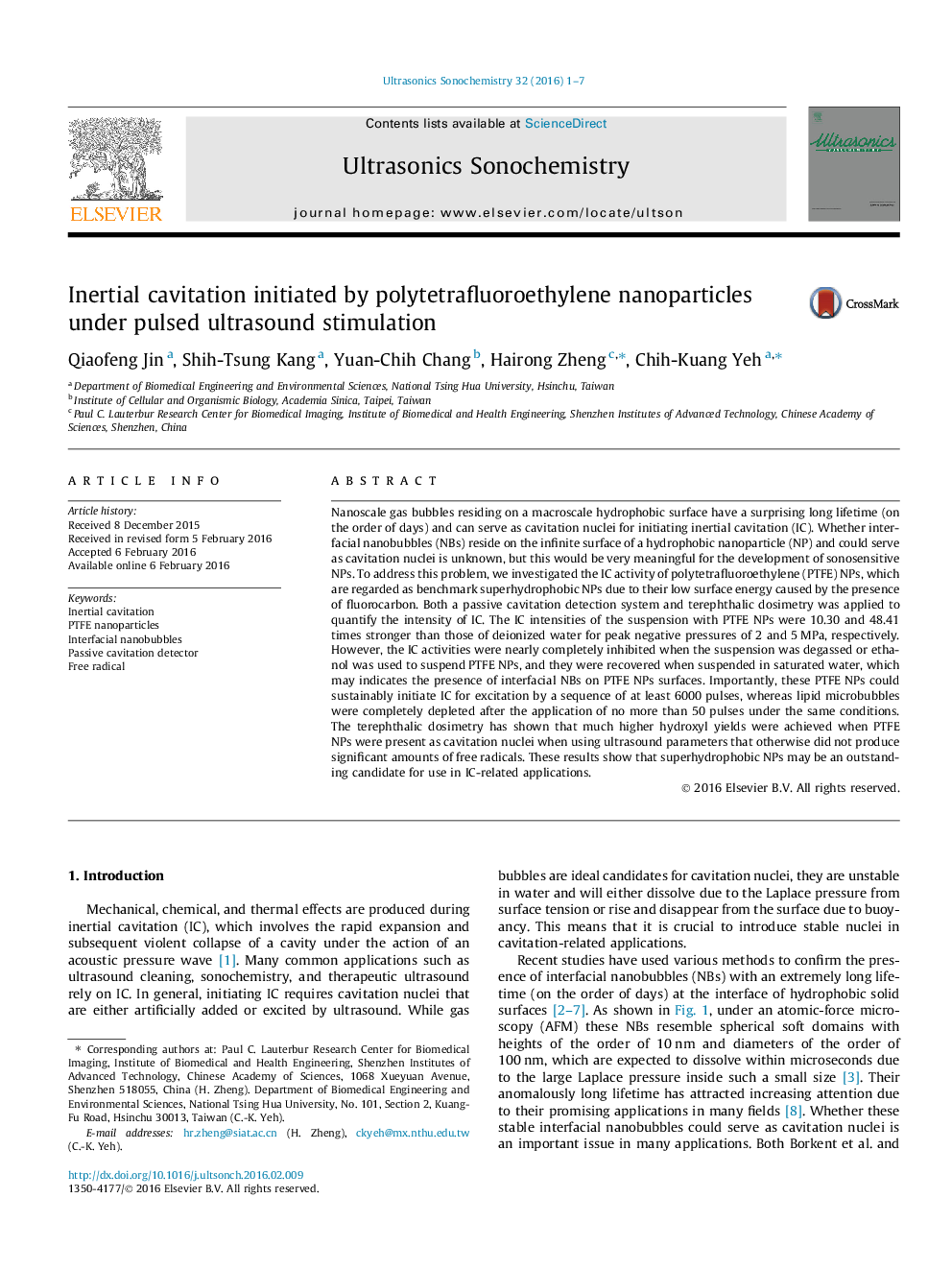| Article ID | Journal | Published Year | Pages | File Type |
|---|---|---|---|---|
| 1269437 | Ultrasonics Sonochemistry | 2016 | 7 Pages |
Nanoscale gas bubbles residing on a macroscale hydrophobic surface have a surprising long lifetime (on the order of days) and can serve as cavitation nuclei for initiating inertial cavitation (IC). Whether interfacial nanobubbles (NBs) reside on the infinite surface of a hydrophobic nanoparticle (NP) and could serve as cavitation nuclei is unknown, but this would be very meaningful for the development of sonosensitive NPs. To address this problem, we investigated the IC activity of polytetrafluoroethylene (PTFE) NPs, which are regarded as benchmark superhydrophobic NPs due to their low surface energy caused by the presence of fluorocarbon. Both a passive cavitation detection system and terephthalic dosimetry was applied to quantify the intensity of IC. The IC intensities of the suspension with PTFE NPs were 10.30 and 48.41 times stronger than those of deionized water for peak negative pressures of 2 and 5 MPa, respectively. However, the IC activities were nearly completely inhibited when the suspension was degassed or ethanol was used to suspend PTFE NPs, and they were recovered when suspended in saturated water, which may indicates the presence of interfacial NBs on PTFE NPs surfaces. Importantly, these PTFE NPs could sustainably initiate IC for excitation by a sequence of at least 6000 pulses, whereas lipid microbubbles were completely depleted after the application of no more than 50 pulses under the same conditions. The terephthalic dosimetry has shown that much higher hydroxyl yields were achieved when PTFE NPs were present as cavitation nuclei when using ultrasound parameters that otherwise did not produce significant amounts of free radicals. These results show that superhydrophobic NPs may be an outstanding candidate for use in IC-related applications.
